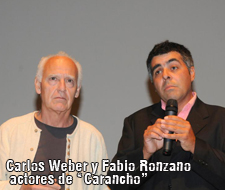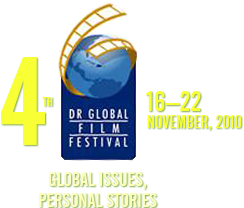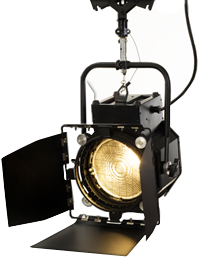

Dominican Republic Global Film Festival Organizers Attend the Berlin Film Festival
Berlin, February 20, 2011Dominican Republic Global Film Festival Attending the 33rd International Court Métrage Festival in France
Santo Domingo, February 8, 2010Dominican Republic Global Film Festival Celebrates the Nominations of 127 Hours
Santo Domingo, January 25, 2010An Even Grander Finale than Ever Newly Honored Liza Minnelli brings down the Curtain on Fourth DR Global Film Festival
Santo Domingo, November 21, 2010Closing Film of the 4th Dominican Republic Global Film Festival Delights Audiences, Young and Old
Santo Domingo, November 21, 2010Jury Chooses First, Second and Third Place Winners in the Second Annual Short Films Competition
Santo Domingo, November 21, 2010Actors workshop: Jimmy Jean Louis's Method for Acting Success and Getting Haiti and DR Together
Santo Domingo, November 21, 2010Short Films: The Beginning of Everything
Santo Domingo, November 21, 2010"Waste Land,” a documentary defending the environment
Santo Domingo, November 20, 2010A Dominican Passion
Outsourcing Baseball Development: Anthony Alcade’s "Buscón"!
Santo Domingo, November 20, 2010Web 3.0 is coming!
And the possibilities for small film producers are exciting!
Santo Domingo, November 20, 2010Profile of an actor: From the Stage to the Screen
Santo Domingo, November 20, 2010“Traces of the Trade: A Story from the Deep North” Personal Story of Discovery, History and How one Family Faces the Sins of their Ancestors
Santo Domingo, November 20, 2010
Profile of an actor: From the Stage to the Screen
Santo Domingo, November 20, 2010

Argentine actor Fabio Ronzano plays the role of the ambulance driver in Pablo Trapero’s gritty film, “Carancho” about Argentina’s corrupt hospitals that allow unscrupulous lawyers in to make money off uninsured accident victims, of which there are many. Over 8,000 people die every year in traffic accidents and thousands more are injured.
 Film director Trapero took one look at Fabio Ronzano and knew he was the right person for the supporting role of ambulance driver. Ronzano said he was thrilled when the phone rang to invite him to the casting call.
Film director Trapero took one look at Fabio Ronzano and knew he was the right person for the supporting role of ambulance driver. Ronzano said he was thrilled when the phone rang to invite him to the casting call.
Ronzano, born and raised in Buenos Aires and now residing in Monte with his wife and family, has been a theater actor for the past nearly 20 years. He said he decided one day in 1992 to take an acting course and a whole new world open up to him. “I had something inside me and I didn’t know it until that moment in my life,” said Fabio speaking to this reporter at the 4th edition of the Dominican Republic Global Film Festival (DRGFF) where “Carancho” was widely acclaimed.
Fabio’s role as ambulance driver in this fast paced film was his first foray into feature film. All these years, he has worked as a stage actor.
“Carancho script writer, Martin Mauregui, saw me in a play 5 years ago and told me he’d use me one day in a film. Five years later the phone rang,” said Fabio.
The Difference between the Stage and Screen
“For one,” explained Fabio, “on the stage the construction of the character is deeper whereas in film the story is more important than the characters.”
He said his role as ambulance driver in “Carancho” required for him to keep a low profile but always be noticeable, always be there, like so many occupations in life, “doing something because you have nothing else to do. The ambulance driver’s attitude was that he could been doing anything to make a living but there he was, seemingly indifferent, driving an ambulance.” He described the characters in “Carancho,” shot in Buenos Aires in the same neighborhood as Trapero’s 2002 film "El Bonaerense," as “penguins stuck in oil, all of them trying to get out and not knowing how.”
He said the film took 8 weeks to shoot whereas a play can generally take up to 4 or more months to prepare.
“On screen, you have to separate yourself from the script and delve profoundly into the role and dramatize in such a way that you can be seen and heard by the entire audience which experiences the work of art but then it is gone. With film, there are a lot more changes yet the final product remains intact, preserved on the screen forever,” he explained. “Theater has a bit of license but nothing like film.”
Fabio, 45, said that while being in a feature film was a new experience for him, he enjoyed immensely and never felt, from the director or anyone else on the crew, that he was new or inexperienced in the seventh art.
“An actor is always an actor, both stage and screen are challenging,” said Fabio who hopes to be back one day to the DRGFF in another film role.
“It has been a wonderful experience here and I appreciate FUNGLODE’s invitation and chance to be here in the Dominican Republic.”
See additional photos of this event in our Photo Gallery under Carancho, Nov. 19 2010 >



